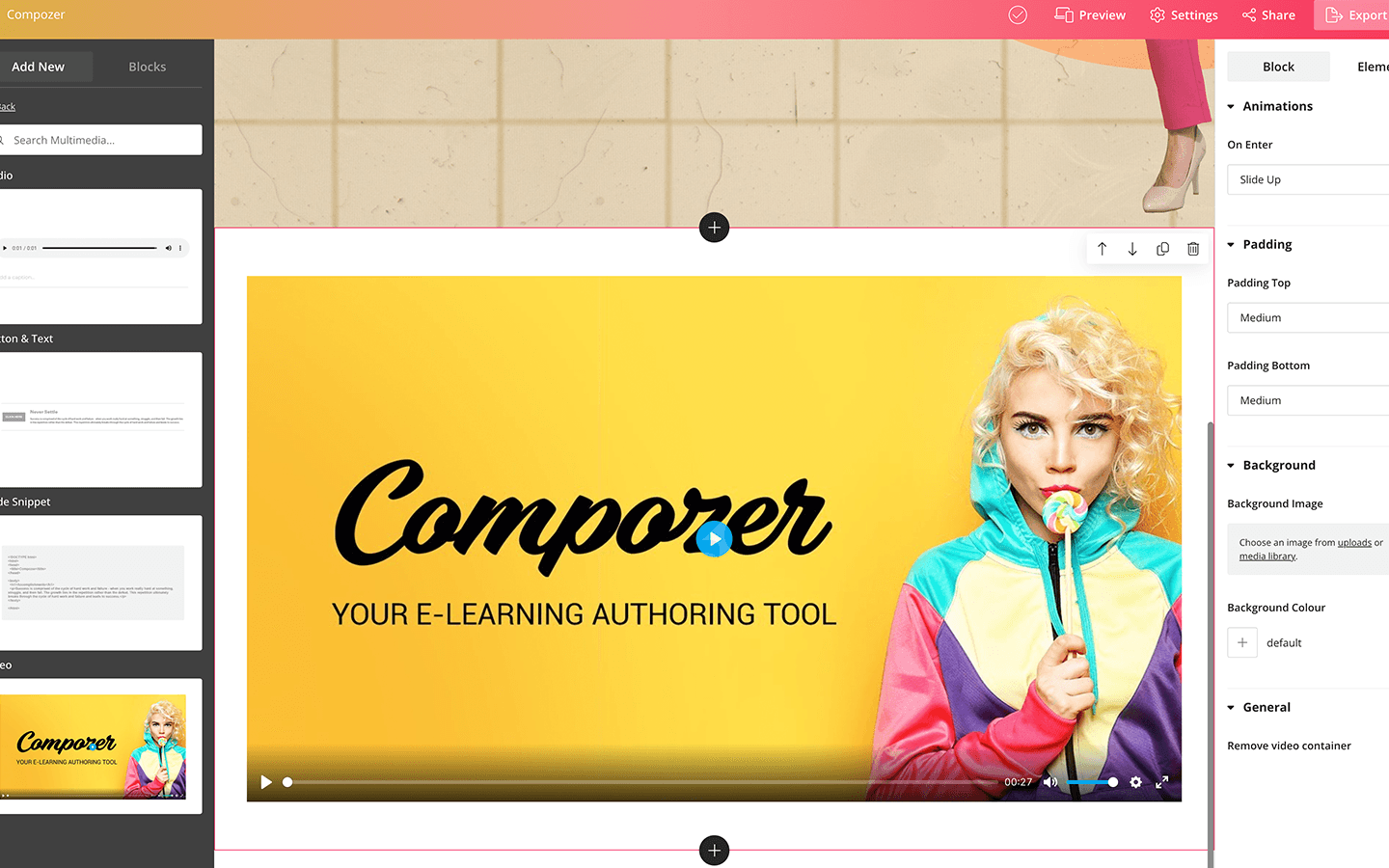26 Jul 2023
HOW LONG SHOULD MICROLEARNING VIDEOS BE?
maestro
Author

Let’s delve into the fascinating world of microlearning videos. When creating these bite-sized educational tools, it's crucial to determine the optimal length. This topic touches on several key terms: Microlearning, Engagement, Retention, Content Density, and Learner Attention Span.
Microlearning: The Power of Brevity
Microlearning is an eLearning strategy that breaks down information into compact, specific lessons. The idea is to make learning more digestible and flexible, fitting into the busy schedules of learners. This approach has gained traction in corporate training and online learning environments.

Key Aspects of Microlearning
- Modular Learning: This approach breaks down complex topics into smaller, standalone modules. Each module covers a specific aspect of a broader subject, making it easier for learners to understand and retain information.
- Engagement: Microlearning boosts Engagement by providing content in short, compelling bursts. This format is more appealing to learners, encouraging them to complete courses and retain more information.
- Accessibility: With its brief format, microlearning fits perfectly into the lifestyle of today's learners. It offers Accessibility, allowing learners to engage with content on-the-go, from any device, at any time.
- Retention: One of the most significant advantages of microlearning is improved Retention. By focusing on key concepts in short sessions, this strategy enhances memory recall and understanding.
- Customization: Microlearning allows for greater Customization. Content can be tailored to meet specific learning objectives and cater to individual learner's needs, making it more relevant and effective.
Advantages in a Corporate Setting
In corporate settings, microlearning serves as an efficient tool for skills development and continuous learning. It aligns with the fast-paced work environment, providing employees with the opportunity to quickly update their skills without disrupting their workflow.
Finding the Sweet Spot: Engagement and Retention
The length of microlearning videos significantly influences Engagement and Retention. Engagement refers to the learner's active involvement and interest in the content, while retention measures how well they remember it. The key is to create videos long enough to cover essential information but short enough to maintain interest.
Ideal Length: Balancing Content Density and Learner Attention Span
The ideal length of microlearning videos depends on two factors: Content Density and Learner Attention Span. Content density is the amount of information packed into a video. It's essential to ensure that videos are not overloaded with information, leading to cognitive overload. On the other hand, Learner Attention Span is a crucial consideration. Research suggests that the average adult attention span is about 8-10 minutes, but this can be shorter in an online environment.
Best Practices in Microlearning Video Length
Based on these factors, the ideal length for a microlearning video is typically between 2 to 5 minutes. This duration strikes a balance between delivering enough content to be educational and keeping it brief enough to maintain attention. However, the complexity of the subject matter and the target audience can influence this range.
In conclusion, microlearning videos should be concise, engaging, and focused. The ideal length of 2 to 5 minutes ensures that learners can absorb and retain the information effectively. By understanding the concepts of Microlearning, Engagement, Retention, Content Density, and Learner Attention Span, creators can produce impactful and efficient learning tools.

For those interested in creating effective eLearning content, Compozer offers a range of tools and templates to streamline the process. Explore more at free e-learning authoring tools at Compozer and start crafting compelling microlearning videos today!
Why Is the Length of Microlearning Videos Important?
The length of microlearning videos is crucial for the effectiveness and efficiency of learning. Videos that are too short might not convey enough information, while those that are too long can dilute the learner's attention. The optimal duration balances effective information delivery while keeping the learner engaged.
How Do Microlearning Videos Enhance Learning Retention?
Microlearning videos enhance retention by breaking down complex information into smaller, more manageable parts. This format aligns with the brain's ability to process and retain information better when presented in short bursts, thereby improving memory retention and understanding.
Can Microlearning Videos Replace Traditional Learning Methods?
While microlearning videos are an effective tool, they are best used in conjunction with traditional learning methods. They excel in reinforcing concepts, providing quick refresher courses, or introducing topics. However, for in-depth learning, a blend of different methods is often more effective.
What Types of Content Are Best Suited for Microlearning Videos?
Content that is easily segmented into small, focused topics works best for microlearning. This includes step-by-step instructions, key concept overviews, language lessons, quick tips, and summaries of complex ideas. Subjects that require deep, continuous thought may not be as suitable.
How Can I Make Microlearning Videos More Engaging?
To make microlearning videos engaging, focus on clear, concise content presentation. Use visuals and storytelling techniques to grab attention. Interactive elements like quizzes or short tasks can also enhance engagement. Personalizing content to the learner's needs and interests can further increase the video's appeal.